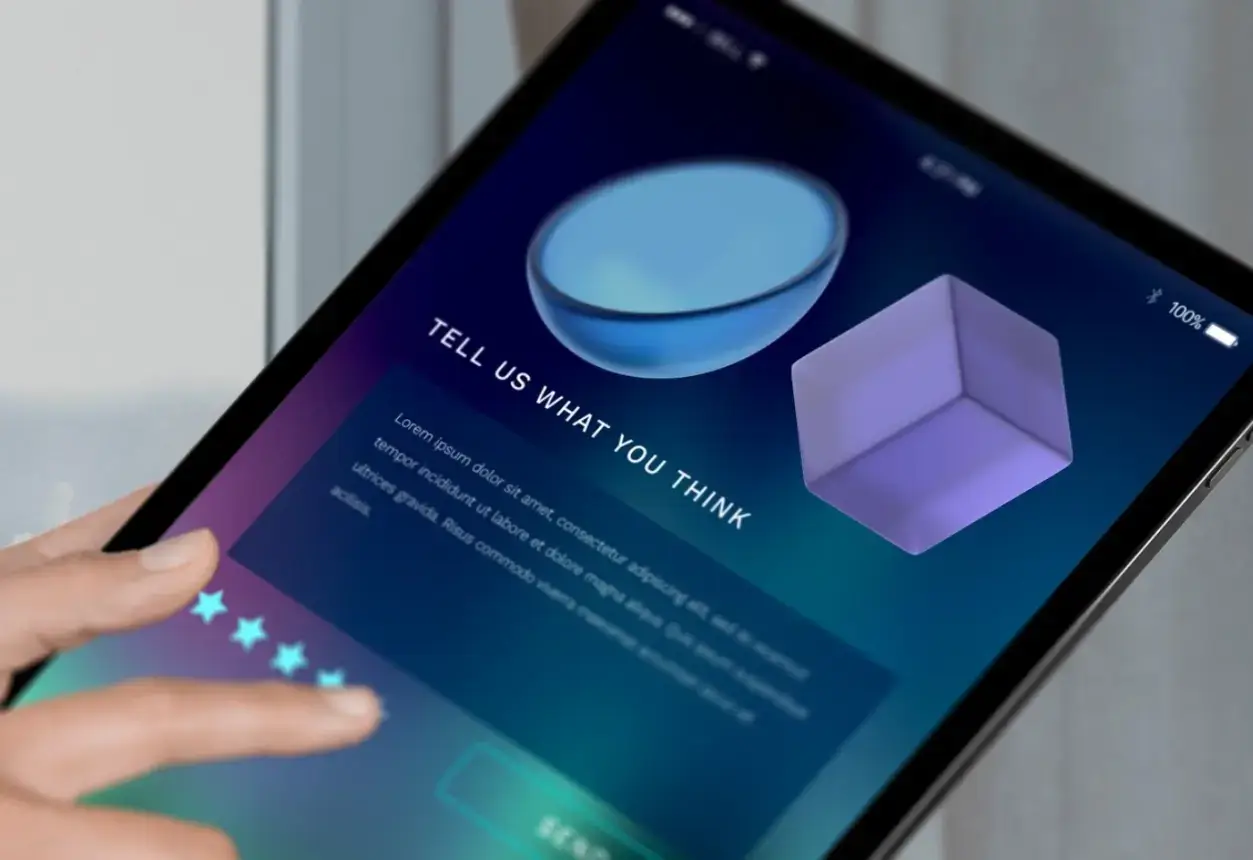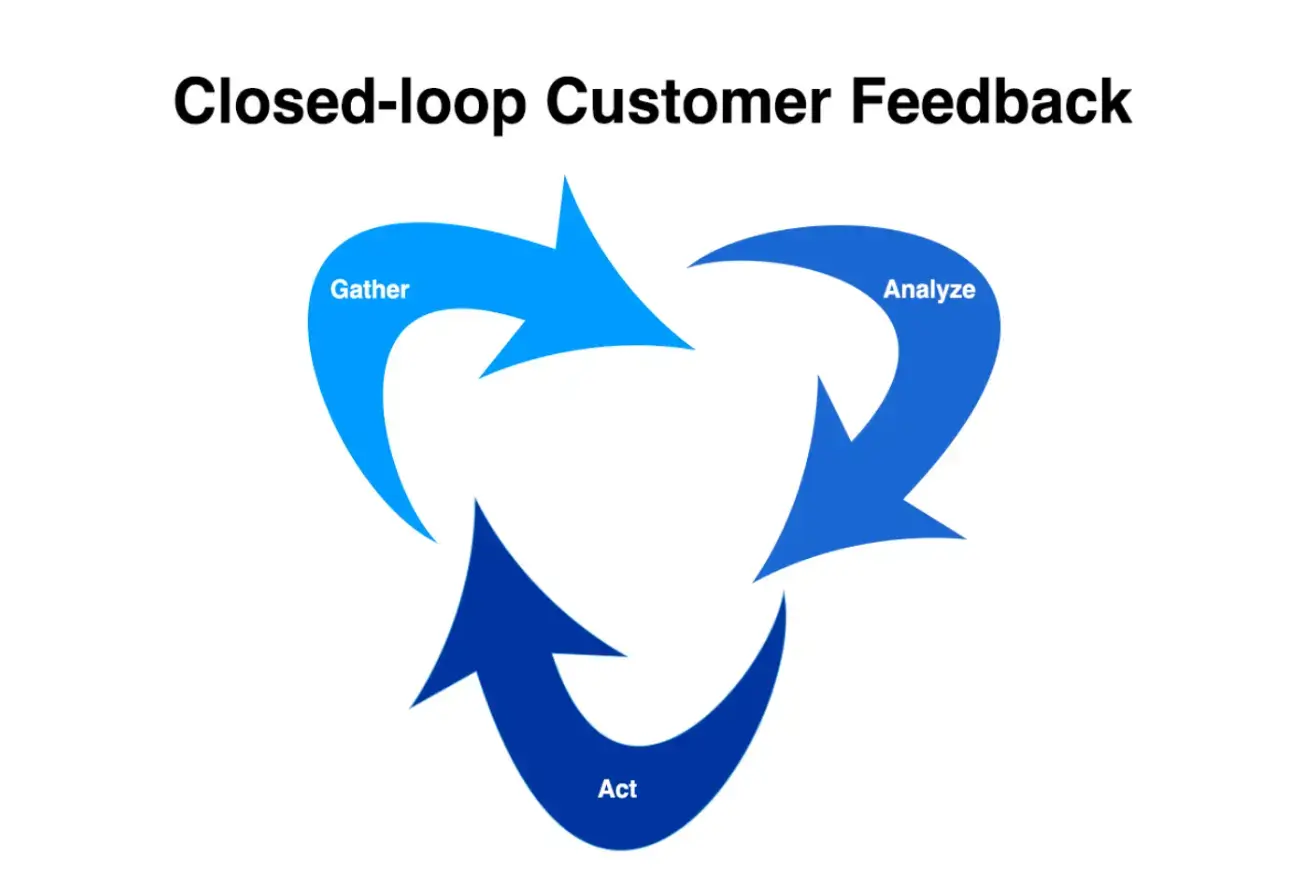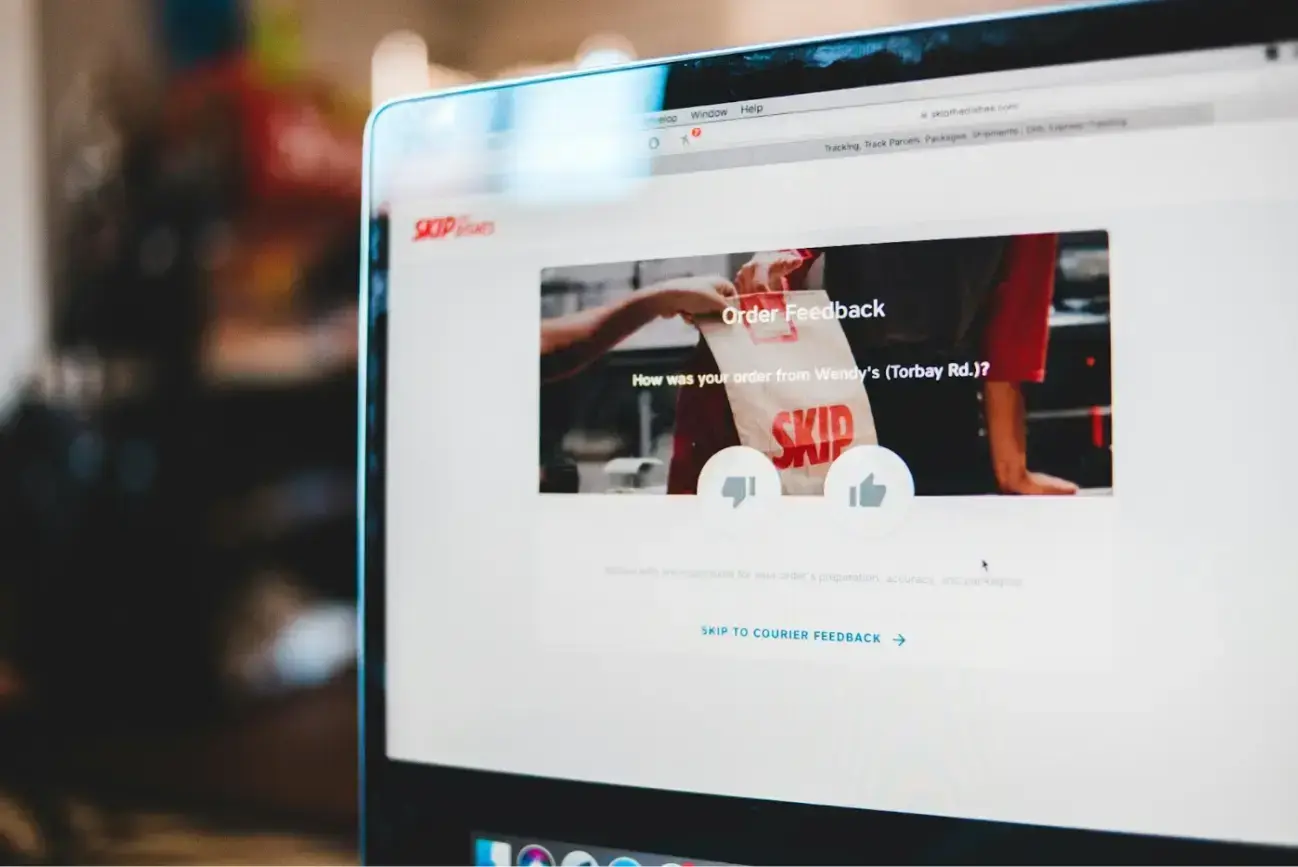Today’s customers have more options and are more informed about their purchases than ever.
They are used to shopping around for the best deals, can recognize quality, and notice when a company puts effort into listening to their customers and delivering on their feedback.
Closed-loop feedback means implementing measures based on customer voices.
Article Shortcuts:
- What Exactly is Closed-Loop Feedback?
- Benefits of Closed-Loop Feedback for Customer Retention
- Closed-Loop Feedback Best Practices
- Five Steps to Build a Closed-Loop Feedback System
The objective is to understand what customers value most, and how you can deliver on these core desires and consumer preferences. The stronger the feedback loop, the more connected customers are with your organization and the more loyal they are to your brand.
Read on to learn more about closed-loop feedback, its benefits for customer retention, and how to build your own closed-loop feedback system in five easy steps.

Free to use image from Pixabay
What Exactly is Closed-Loop Feedback?
Closed-loop feedback or a closed-loop system refers to the process of a company gathering and then following up on consumer feedback. It describes the process of closing the customer feedback loop by first collecting, then analyzing, and finally acting on consumer insights.
A crucial step in the process is also informing customers that you’ve heard their feedback and have taken steps in response. This can mean making improvements in line with consumer demands, fixing issues, and making changes in product development in line with their insights.
All this shows your audience that you value their input and that you’re listening. This reduces customer churn, improves customer relationships, and makes for more successful companies overall.
When pursuing closed-loop feedback systems, there are two types you’ll encounter: outer loop and inner loop feedback. You might implement either or both depending on your individual business circumstances.
-
Inner loop
Inner loop feedback refers to immediate reactive feedback and resolution. It typically involves the resolution of customer problems that are brought to your attention by the customer, likely through customer support.
For example, a customer might reach out to your customer service hotline to report a faulty product.
Your agent understands the issue and takes steps to resolve it without needing to consult any higher-ups. They have the authority to arrange for a repair or replacement.
-
Outer loop
Conversely, outer loop feedback refers to broader systems of resolution that require action plans, interdepartmental consultation, policy updates, or other structural changes and are thus less immediately resolved. Here, you’re often finding solutions to repetitive issues by developing totally new initiatives.
A good outer loop example might be when a customer contacts your company complaining about an issue with pricing on your website.
Your agent is unable to resolve this without the involvement of your tech and e-commerce teams. It might require data experts who can use Apache Hive documentation to make data-driven decisions and resolve issues at their core.
Agents can’t resolve issues immediately, but contact the necessary members of your team to make long-term improvements for your customers.

Image created by writer
Benefits of Closed-Loop Feedback for Customer Retention
There are a plethora of benefits to closing the loop on customer feedback. Listening to customer complaints assures your customers that you are devoted to continuous improvement in line with their needs.
-
Better customer experience
Closed-loop feedback promises a better overall customer experience. Encouraging and listening to feedback gets customers involved at every stage of the business process.
You’re creating opportunities to resolve complaints and handle issues with speed and accuracy. Customers who feel they have a voice within your organization feel valued and are more likely to make repeat purchases of products and services.
Gathering customer data and conducting analysis also means you have more information with which to make informed future decisions.
From here, you can build better customer experiences but also make better use of resources, pooling them towards product development initiatives where consumers have expressed considerable interest.
-
Reduced customer churn
Inferior customer experiences can have a real impact on customer churn. In fact, even one bad experience can stop customers from doing business with your company.
Closed-loop feedback provides you with the opportunity to repair relationships, pre-empt customer desertion, and actively encourage customer re-engagement.
According to Ernst & Young, business growth means building enduring customer relationships. To achieve this, your brand needs to show its commitment to customer satisfaction.
Closing the feedback loop will reduce churn by demonstrating to customers that you are acting on their feedback and resolving issues at their very source.
-
Enhanced brand reputation
Closed-loop feedback builds positivity from the ground up, imparting trust throughout the customer journey.
When customers are being listened to and see their feedback acted on, they are more likely to speak positively about your brand, leave reviews, and support your company across social media platforms.
You’re reducing negative experiences by engaging with customer issues immediately and pursuing the necessary remedies. This in turn prevents negative responses and reviews from being left on public platforms thereby enhancing brand reputation.
Positive consumer experiences also encourage audiences to take the initiative to recommend your brand to others.

Free to use image from Pixabay
-
Quicker resolution times
No matter your target audience, all customers appreciate fast resolution times.
With closed-loop feedback, your customer service agents are given the authority to respond to customer queries directly and immediately. The system also enables quicker problem identification so that when feedback is given, it is immediately followed up on.
Engaging with users who have had negative experiences means you can temper situations and assuage customer concerns before they become lingering issues. The faster the resolution, the more likely you are to turn questions and issues into positive brand experiences.
-
Increased revenue
Improving the customer experience means consumers are more likely to see value in your business and therefore be willing to pay more for quality goods and services.
In addition, if you have improved loyalty you are likely to see consistency in sales, with customer recommendations also driving higher profits.
Closed-loop feedback also becomes an essential revenue-driving exercise insofar as it directs companies toward the most profitable innovations and developments. Collecting customer insights guides you in your investments.
The closed-loop feedback will show you where customers are willing to spend their money, what they want to purchase, and where to make improvements and adjustments to your existing line of goods/services.
Closed-Loop Feedback Best Practices
Before you can effectively close the customer feedback loop, you need to consider the best practices and necessary integrations to create a scalable and robust system.
Consider the list below as your starting point:
-
Reasonable follow-up times
There are a number of methods you can pursue to ensure that you are responding to customer queries in a reasonable time. Within your response, you should:
- Acknowledge the issue at hand.
- Reassure the customer that you are looking into the issue.
- or provide an immediate solution.
You can do these things with auto-generated emails, a well-built chatbot, customer service phone lines via PBX phone systems, live chat software, and messaging apps.
The easier it is to contact you, the more your brand reputation will benefit.
Consider putting a limit of 24-48 hours on customer response times, have a 24-hour support line, and follow up with customers after a solution has been offered.

Free to use image from Unsplash
-
Track recurring issues
Successful closed-loop feedback means paying attention to recurring issues.
By virtue of collecting such a substantial data pool, closed-loop feedback uncovers operational problems you may not have spotted organically. This could range from missing links on landing pages to issues with the delivery process, and customer service areas that need improvement.
By collecting data wherever a customer interacts with your business, you’ll be able to spot recurring issues and the areas that trigger the most customer complaints. You can also use all this information to conduct more reliable forecasting, i.e., how quickly a product might sell out, how to automate inventory restocking, etc.
Ask your internal data team questions such as, “what is a Bayesian Neural Network?” Then, consider how to best use Bayesian neural networks for repeat purchase modeling to assist in drawing information from data processing via artificial intelligence.
-
Listen to complaints
Complaints are at the heart of the customer feedback loop. They show you where customers are facing their most pressing issues and the obstacles that are preventing them from becoming repeat customers.
Negative feedback also helps your business identify the main areas for improvement and enhance the customer experience through feedback-improved decisions.
Make sure you have a dedicated system in place for handling customer complaints. This might include a dedicated customer service line, email address, or even guiding customers to reach out via social media direct messaging. From the time a complaint is submitted, it should be tracked to resolution.
-
Choose the right communication method
When getting in touch with your customers, it’s important to meet them on the platforms they are most active. If a complaint has been logged via email, reply quickly informing your customers of the steps you are taking to fulfill their request or answer their complaints.
A phone call is often the easiest method through which to resolve issues, especially if you have to talk a customer through troubleshooting or any other kind of technical support.
If your target demographic tends to be younger, you might have more success communicating via social media. Apps like Instagram will notify customers when they have a message via their mobile devices, so they will see your responses instantly.
-
Engage at all levels
Engaging at all levels means reaching as many customers as possible within your closed loop.
Create engaging content that users will want to interact with. For example, you could add rewards and games to surveys and polls.
You should aim to close the loop at different levels. That means collecting feedback at various avenues of the customer journey, not just through customer support.
Most of your employees should have the capability to respond to issues and thus close the feedback loop. Train your in-store staff appropriately and ensure your technical support is on hand when needed.

Free to use image from Pexels
Five Steps to Build a Closed-Loop Feedback System
Follow this short guide to create an effective closed-loop feedback system and retain your customers:
1. Collect feedback efficiently
The first step of any closed-loop feedback system is collecting customer feedback. Here, you want to source information from a wide variety of consumers, each at different stages of the customer journey.
This will range from asking for the completion of surveys after receiving customer service help to requesting reviews when a product has been purchased.
Crucially, feedback should be easy for your customers to provide and efficient to manage.
Consider employing various online survey systems and platforms. Alternatively, you can use agents outside your business who will manage the process for you.
You should also take steps to ensure customer information is kept safe and secure. Only collect the most important data, invest in specialist software, and encrypt sensitive data.
2. Follow the customer journey
Invest in ticketing and case management systems to follow customer queries from their first reporting right the way through to resolution. This ensures that issues are directed to the right teams to manage them.
Next, create any necessary resources and processes to ensure your employees are capable of providing solutions and therefore closing feedback loops. This can include training courses, customer service flowcharts, and prompt cards for agents.
3. Prioritize critical issues for resolution
When you’ve collected feedback, you should prioritize issues based on urgency. Make sure the most critical issues are addressed immediately, and that you’re prioritizing recurrent issues.
For small businesses, you should take gradual steps to improve the trustworthiness and credibility of your business. For example, where a full-service customer support mechanism might not be possible, you should endeavor to provide some level of responsive customer outreach.
4. Communicate with employees
Your employees must be included in the feedback loop.
Give them the opportunity to reach out, voice their own concerns, and provide feedback. It’s likely the most valuable insights will come from employees working on the frontline of your business.
Create a digital form or document where employees can write feedback. If you have no internal corporate system or intranet, cloud computing for small businesses can be useful.
5. Contact your customers
Finally, get back in contact with your customers. Communicate how you’ve dealt with their issues or are taking steps to address their concerns.
Follow up on feedback and ask more questions or thank customers for their responses. Here, you’ll close the feedback loop by showing that you’ve listened, analyzed, and acted.

Free to use image from Pixabay
Close the Feedback Loop, Reduce Your Customer Churn, and Build Brand Loyalty
In today’s competitive digital landscape, businesses need to show customers that they are valued.
Modern ecommerce brands can no longer retain customers with a one-size-fits-all approach. Instead, they must demonstrate that consumer voices are being heard and that the insights they provide are valued.
Collecting feedback starts your business on the path to increased growth and success.
Closing that feedback loop means acting on customer concerns, resolving issues, and creating a positive customer experience.
This improves customer retention and inspires existing customers to recommend you to new ones.
Author Bio
Mick Essex is the Head of Growth + Partnerships at POWR for just over 2 years. POWR makes no-code apps and plugins for e-commerce shop owners globally. They have provided marketing and conversion tools on Shopify for 10 years, and 5 years on Ecwid.
Mick's career spans two decades, primarily in growth marketing in healthcare, with stints in broadcast television, advertising, and copy editing.
Mick attended the College of Journalism at the University of Louisiana - Monroe. His wife Elizabeth, son Gavin, and pup Jolene call Lafayette, Louisiana, their home.



